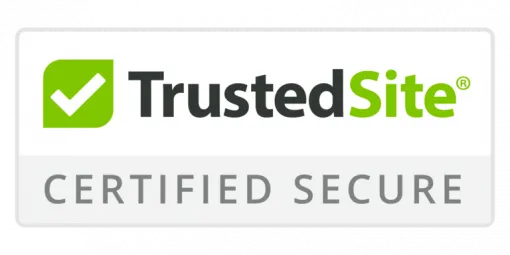Launching a successful cold calling campaign for your B2B company involves more than just defining your target audience, building a quality lead list, and crafting a compelling pitch. While these steps are essential, ensuring your campaign's success requires a comprehensive understanding and implementation of several critical strategies.
First, you need to develop a personalized call script tailored to resonate with your target audience. This script should include key points that address the common pain points of your prospects and articulate the unique value your company offers. Training your team to handle objections with empathy is crucial; they should be prepared to listen actively and respond thoughtfully to potential concerns.
Next, understanding key performance metrics is vital. Metrics such as call connection rates, conversion rates, and average call duration provide insights into what's working and what needs improvement. Regularly analyzing these metrics allows you to refine your approach and optimize your campaign for better results.
Additionally, leveraging technology can significantly streamline your cold calling efforts. CRM systems, auto-dialers, and call tracking software can enhance efficiency and productivity, enabling your team to focus more on building relationships rather than managing administrative tasks.
To summarize, a strong foundation for your cold calling campaign involves:
- Crafting a personalized and compelling call script.
- Training your team to handle objections with empathy.
- Monitoring and analyzing key performance metrics.
- Utilizing technology to streamline your processes.
By implementing these strategies, you can drive meaningful results and achieve your campaign goals.
Defining Your Target Audience
To kick-start a successful cold calling campaign for your side hustle, you need to zero in on your ideal customer by defining a target audience that aligns with your specific products or services.
You can't just wing it and expect results; you need a clear understanding of who you're trying to reach.
That's where buyer personas come in—semi-fictional representations of your ideal customers based on industry research and data analysis.
Building a Quality Lead List
Building a Quality Lead List for Your Side Hustle
Fueling your side hustle with a quality lead list is essential to ensure you're reaching high-potential prospects who align with your target audience. To build this list, employ effective lead sourcing strategies that identify and engage the right decision-makers.
Start by leveraging data enrichment techniques to enhance your existing database, appending essential contact information and firmographic data.
Here are some actionable tips to get you started:
- Use industry reports, research studies, and online directories to identify key players in your niche.
- Utilize social media platforms, like LinkedIn, to find and connect with potential leads.
- Leverage customer referrals, case studies, and testimonials to build credibility and trust.
- Tap into online databases, such as ZoomInfo or Datanyze, to access detailed company and contact data.
Crafting a Compelling Pitch
When crafting your pitch for your side hustle, emphasize unique value propositions that differentiate your offering from others and directly tackle the specific pain points of your target audience.
Customizing your pitch to resonate with decision-makers will maximize your results by addressing their particular interests and concerns.
This approach will enhance your chances of capturing their attention, sparking interest, and ultimately driving conversions for your side hustle.
Developing Unique Value Propositions
Developing a compelling pitch that showcases your unique value proposition is crucial for attracting potential clients and standing out in a competitive side hustle market. By clearly articulating your competitive advantage, you'll be able to address customer pain points and demonstrate how your solution can meet their specific needs.
To develop a unique value proposition that resonates with your target audience, consider the following key elements:
- Identify your target audience: Understand their specific pain points, challenges, and goals.
- Conduct a competitor analysis: Analyze your competitors' strengths and weaknesses to differentiate your solution.
- Clearly articulate your benefits: Explain how your solution addresses customer pain points and delivers tangible results.
- Quantify your value proposition: Use data and statistics to demonstrate the impact of your solution.
Pitching to Decision Makers
With your unique value proposition in place, pitch your side hustle to decision makers in a clear and compelling way that resonates with their needs and drives meaningful results. To do this, you'll need to understand the decision maker's pain points and tailor your pitch accordingly. Identifying influencers within the organization can also help you tailor your message.
| Understanding Decision Makers' Needs | Crafting Your Pitch |
|---|---|
| Identify their pain points | Clearly explain how your side hustle addresses these pain points |
| Understand their business goals | Emphasize how your side hustle aligns with these goals and drives results |
| Recognize their technical requirements | Highlight the technical benefits and features of your side hustle |
| Consider their budget constraints | Provide a clear ROI argument and flexible pricing options |
Developing a Call Script
Your call script serves as the foundation of a successful cold calling campaign for your side hustle, allowing you to deliver a clear, concise, and compelling pitch that resonates with potential clients and sets you apart from competitors.
By developing a solid script, you'll be able to convey your value proposition, build rapport with decision-makers, and ultimately drive conversions.
To create an effective call script for your side hustle, consider the following key elements:
- Clearly define your objective: Determine what you want to achieve with each call, whether it's scheduling a meeting or securing a sale.
- Personalize your pitch: Tailor your script to each prospect's unique needs and pain points.
- Vary your tone: Use a mix of enthusiasm, empathy, and authority to engage and persuade.
- Highlight your USP: Emphasize what sets your side hustle's product or service apart from others in the market.
Handling Common Objections
As you master your call script and start connecting with potential clients for your side hustle, you'll inevitably encounter objections that can make or break a sale – and knowing how to handle them can be the difference between a successful pitch and a missed opportunity. Effective objection handling requires empathy techniques that acknowledge the prospect's concerns while redirecting the conversation towards solutions.
| Common Objection | Empathy-driven Response |
|---|---|
| 'Your service is too expensive.' | 'I understand budget constraints are a concern. Can I walk you through the cost savings our service provides in the long run?' |
| 'I'm not ready to make a decision.' | 'I appreciate your caution. Can I offer some insights on how our service addresses your current pain points?' |
| 'I'm already using a similar service.' | 'I respect your existing relationships. Can I highlight what sets our service apart and how we can bring added value?' |
Measuring Campaign Success
To gauge the effectiveness of your side hustle, you'll need to track key performance metrics that reveal what's working and what areas require improvement.
By doing so, you'll be able to evaluate the return on investment (ROI) of your efforts and make data-driven decisions to boost your side hustle's performance.
Tracking Key Performance Metrics
Tracking Key Performance Metrics for Your Side Hustle
Measuring the success of your side hustle requires tracking key performance metrics that provide actionable insights into the effectiveness of your efforts. By monitoring these metrics, you'll be able to identify areas of improvement, optimize your strategy, and ultimately boost your overall performance.
To get started, focus on the following key performance indicators:
- Number of hours invested: Are you dedicating enough time to meet your side hustle goals?
- Engagement rates: How many interactions are you having with potential clients or customers?
- Revenue generation: How much income is being generated from your side hustle efforts?
- Customer nurturing: Are you effectively maintaining relationships and encouraging repeat business?
Evaluating Return on Investment
By evaluating the return on investment (ROI) of your side hustle's marketing campaigns, you'll be able to quantitatively assess their effectiveness, identify opportunities for improvement, and make data-driven decisions that maximize your revenue growth.
To do this, you'll need to analyze your marketing analytics, tracking metrics such as conversion rates, customer acquisition, and sales closures. This will help you establish ROI benchmarks for future campaigns.
With a clear understanding of your campaign's ROI, you can make informed decisions about where to allocate resources and how to optimize your strategy. For instance, if you find that a particular platform or customer segment is more receptive to your marketing efforts, you can adjust your targeting to focus on those areas.
By continually evaluating and refining your approach, you'll be able to maximize the returns on your marketing investment and drive real revenue growth for your side hustle.
Best Practices for Follow-Up
Best Practices for Follow-Up on Your Side Hustle
Your follow-up strategy for your side hustle is just as critical as your initial outreach. A well-timed and well-crafted follow-up can turn a lukewarm interest into a solid opportunity. Being strategic and persuasive in your follow-up can make all the difference. Here's how to optimize your follow-ups:
- Respect boundaries – don't be too pushy and give your contacts space if needed.
- Use follow-ups to add value, not just to check in.
- Experiment with different timing strategies to find what works best for your side hustle.
- Personalize your follow-ups to show you've been paying attention.
Leveraging Technology for Efficiency
Technology can be a game-changer for your side hustle, allowing you to streamline processes, reduce manual effort, and boost overall efficiency. By leveraging the right tools, you'll be able to focus on high-value activities like building relationships and closing deals.
| Benefits of Leveraging Technology | Impact on Your Side Hustle |
|---|---|
| Automation Tools | Save time and reduce manual effort by automating repetitive tasks like data entry and follow-up emails. |
| CRM Integration | Seamlessly track interactions, analyze customer data, and tailor your approach to each lead's unique needs. |
| Real-time Analytics | Get instant insights into campaign performance, so you can refine your strategy and optimize results. |
| Enhanced Collaboration | Enable you to work more effectively with partners or team members, share best practices, and drive collective success. |
To maximize efficiency, consider integrating automation tools and CRM systems into your side hustle workflow. This will help you streamline tasks, guarantee data accuracy, and gain valuable insights into customer behavior. By embracing technology, you'll be empowered to drive more conversions, build stronger relationships, and ultimately grow your side hustle. So, don't wait – start leveraging technology today and transform your side hustle forever!
Conclusion
You've executed a well-planned cold calling campaign for your side hustle, and now it's time to reap the rewards.
But, you might be thinking, 'I don't have the resources to continually follow up with leads.' Don't let that hold you back.
By leveraging technology and implementing efficient processes, you can stay top of mind with potential clients and ultimately close more deals.
Think of it like nurturing a flame – with consistent effort, it can turn into a roaring fire, fueling your side hustle's growth and success.

















































0
View comments